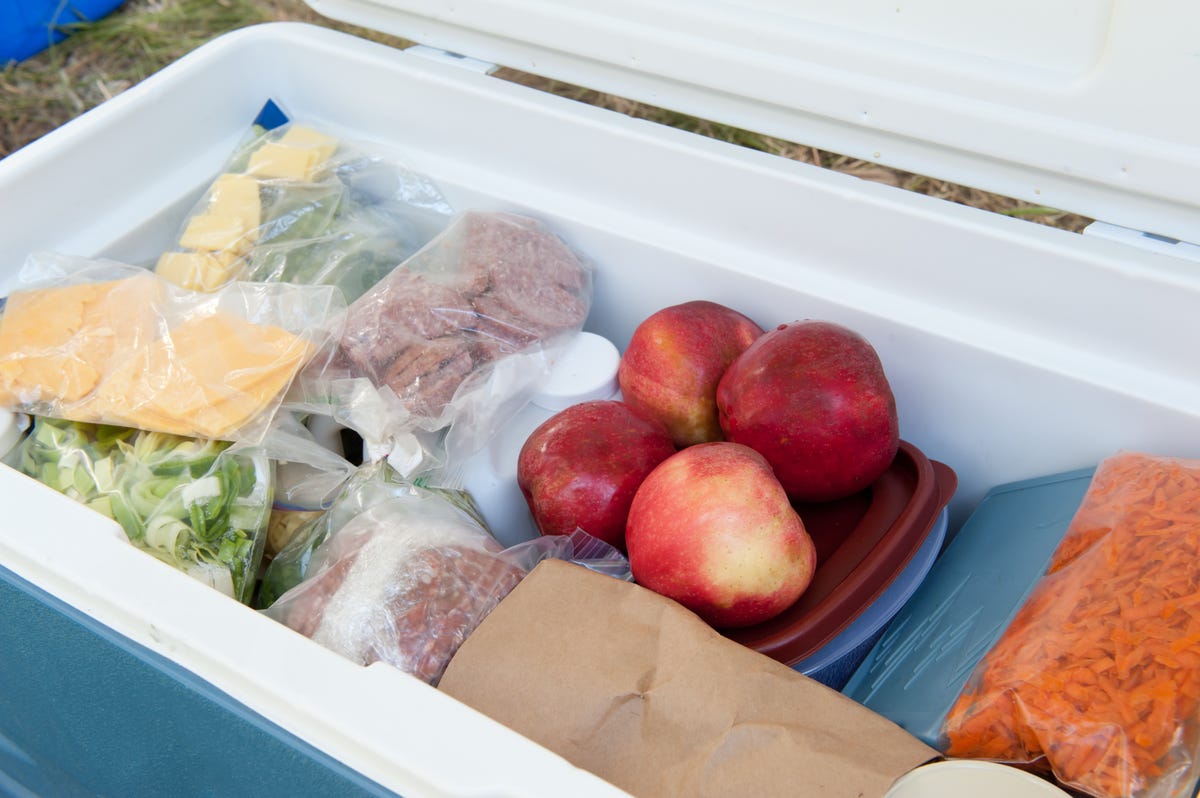Boom! Boom! The power goes out in the middle of a thunderstorm. When you’re caught in a power outage, you have more to worry about than just light. You also have to walk around in the dark and make sure the food in your fridge doesn’t spoil. If the power outage lasts for several days, you’ll also be concerned about preserving food in your fridge. That’s why it’s a good idea to have a plan in place for a possible power outage. Power outage Inside the house. Especially now, with the frequency of abnormal weather, Hurricane and Heat wave It continues to affect people in the United States as well.
If you can’t get to the store during a storm like Hurricane Debby, which made terrifying landfall this month, losing a fridge full of food can be costly, inconvenient and potentially dangerous. But there are ways to prepare ahead of time so you can preserve all or most of your perishable foods. Here’s how.
For more disaster preparedness tips, check out these guides: How to Prepare for Hurricanes, Wildfires, Storms, and Other Natural Disasters and 11 things to do in preparation for a power outage.
If possible, prepare to store food before a power outage occurs.
Before you face a power outage, it’s a good idea to make some preparations in case you need to rescue food. Recommendations from the Centers for Disease Control and Prevention You should have the following items on hand:
- Thermometer for home appliances Place thermometers in both your refrigerator and freezer so you can monitor if the temperature rises enough to require you to remove food. Refrigerator temperatures should never exceed 40°F, and freezer temperatures should never exceed 0°F.
- a cooler and Frozen gel packIn case you have to take food out of the fridge to keep it cold.
- Dry ice Or, if you think the power outage will last an extended period of time, use ice blocks to keep food cold in your refrigerator.
read more: Best Cooler of 2022
What to do about food when a power outage starts
If a power outage occurs, keep refrigerator and freezer doors closed. Don’t open them unless absolutely necessary, and do so quickly to prevent cold air from escaping. According to the CDC, keeping the doors closed will keep food safely stored for up to 4 hours in the refrigerator, 48 hours if the freezer is full, and 24 hours if the freezer is half full.
If the power remains out after four hours (or the temperature inside the refrigerator has risen above 40 degrees), you should begin removing food from your refrigerator. If there is any perishable food left in the refrigerator after that point, you should discard it.
The exception to this is if you have dry ice, which you can place on the top shelf of your freezer and the bottom shelf of your refrigerator to keep perishable foods cold. 3 pounds of dry ice per cubic foot of freezer spaceIt can keep food cold for at least 2 days. How to Handle Dry Ice Safely Before use.

If the power outage lasts for more than four hours, you may want to move perishable foods into a cooler.
Divide food into two groups
First, make two piles: foods that absolutely must be kept refrigerated and foods that are safe to leave on the counter until the power is restored.
Foods that do not need to be refrigerated
The following foods are safe to eat without refrigeration:
- Butter (1-2 days worth)
- Peanut butter
- Most edible oils except nut oils
- Herbs
- Potatoes
- Most fruits and vegetables
- bread
- coffee
- Honey
- Ketchup, mustard, hot sauce
Foods that need to be kept refrigerated
The following foods should be stored at or below 40 degrees F to prevent bacterial growth and spoilage:
- Dairy products (cheese, milk, whipped cream, sour cream)
- egg
- Meat, poultry, and fish (cooked or uncooked)
- Cut fruits and vegetables
- leftovers
How to keep fresh food cold without a refrigerator
After you’ve put your perishable foods in a pile, get out your cooler and ice packs. Place a layer of frozen food on the bottom. Then place a layer of food from the fridge on top of that layer. Place another layer of frozen food on top of that. If you don’t have ice or ice packs, go to the store and buy some if it’s safe to do so.
Layer ice or ice packs around the foods in the cooler. Don’t dump it all on top or bottom. Evenly distributing the ice will help keep food temperatures more consistent. Move a refrigerator thermometer inside the cooler to monitor the temperature.
If you don’t have a cooler, you can use your freezer instead. Freezers are insulated and will keep food cold as long as you keep the door closed and keep fresh ice in them. To prevent melted ice from puddling in your freezer, fill bowls with ice and place them around your food.
Never taste food to see if it’s spoiled; if in doubt, throw it out, advises the CDC. Immediately discard any food that has an odd odor, color, or texture. As for frozen foods, thawed frozen foods that are below 40 degrees F or that still have ice crystals can be safely refreezed or cooked.
Want more tips on how to prepare for natural disasters? How to pack an emergency bagand How to recover important documents after a natural disaster.







